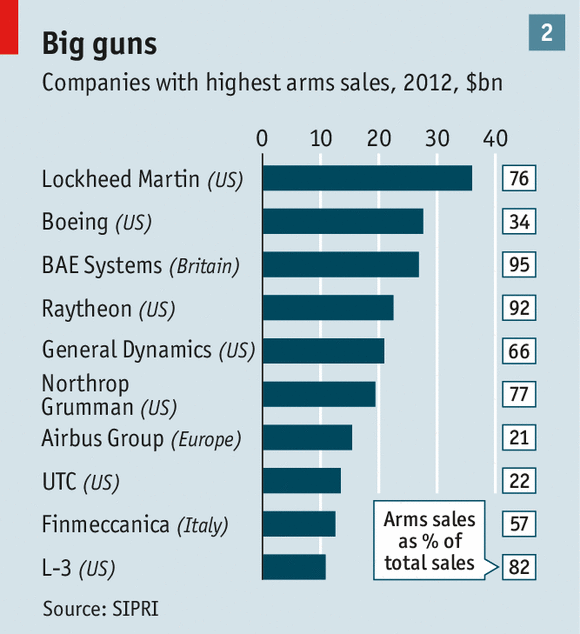Introduction
The American arms manufacturing industry has a long and complex history, deeply intertwined with global conflicts and geopolitics. From the Revolutionary War to the present day, American weapons manufacturers have played a significant role in shaping the outcomes of wars and conflicts around the world. This article delves into the evolution of American arms manufacturing and its far-reaching influence on global conflicts.
The American arms manufacturing industry boasts a rich and intricate history, closely entwined with the ever-evolving tapestry of global conflicts and geopolitics. From the earliest days of the Revolutionary War to the complex landscape of modern warfare, American weapons manufacturers have consistently wielded a profound influence on the outcomes of wars and conflicts across the globe.
One pivotal chapter in this history is the American Civil War, where both the Union and Confederate forces relied heavily on domestically produced weapons. The emergence of innovative firearms, such as the Spencer repeating rifle and the Gatling gun, revolutionized battlefield tactics and strategies. These developments not only showcased the industry’s adaptability but also left an indelible mark on the course of the conflict.
As the 20th century dawned, the United States became a major player on the global stage, and its arms manufacturing industry evolved accordingly. World War I witnessed a surge in American arms production, with factories churning out vast quantities of weapons and equipment. The introduction of iconic firearms like the M1911 pistol and the Springfield M1903 rifle played pivotal roles in the war effort, underscoring the industry’s contribution to the conflict’s outcome.
World War II marked another significant turning point. American arms manufacturers, often working in tandem with Allied forces, produced a staggering array of weapons and equipment. The M1 Garand rifle, the M3 submachine gun, and the Sherman tank were among the iconic American-made weapons that shaped the course of the war. The industrial might of the United States, combined with the innovation of its weapons manufacturers, played a pivotal role in securing victory.
The post-World War II era witnessed the expansion of American arms manufacturing into a global industry, with exports of military hardware becoming a crucial element of foreign policy and diplomacy. American weapons found their way into the hands of allied nations, shaping the outcome of various conflicts, including the Korean War and the Vietnam War.
The Cold War era further fueled the arms race, with American arms manufacturers at the forefront of technological advancements. The development of nuclear weapons, ballistic missiles, and advanced fighter aircraft showcased the industry’s role in both deterrence and strategic geopolitics.
In the contemporary era, American arms manufacturing continues to influence global conflicts, as the United States remains a major supplier of weapons and military technology to nations around the world. The industry has diversified to include not only traditional arms but also advanced cyber and electronic warfare systems, reflecting the evolving nature of modern conflict.
In conclusion, the evolution of American arms manufacturing is a story of adaptation, innovation, and influence on a global scale. From the earliest days of the Revolutionary War to the complexities of modern warfare, American weapons manufacturers have played a pivotal role in shaping the outcomes of conflicts, leaving a lasting legacy on the world stage. This industry’s history is a testament to its resilience, adaptability, and enduring impact on the course of history.
Explore this link for a more extensive examination of the topic: Risky Business: The Role of Arms Sales in U.S. Foreign Policy …
The roots of American arms manufacturing can be traced back to the early days of the United States. In the late 18th century, the nation’s Founding Fathers recognized the importance of a domestic arms industry for national defense. The establishment of government arsenals, such as Springfield Armory, laid the foundation for a burgeoning arms manufacturing sector.
The history of American arms manufacturing is a testament to the nation’s commitment to self-reliance, innovation, and national security. The early days of the United States were marked by a strong recognition among the Founding Fathers of the strategic importance of having a robust domestic arms industry.
Founding Fathers’ Vision: The Founding Fathers, including George Washington, Alexander Hamilton, and Thomas Jefferson, understood that a strong and self-sufficient arms industry was essential for the young nation’s security and sovereignty. Their vision encompassed not only military defense but also economic independence.
Government Arsenals: In pursuit of this vision, the U.S. government took concrete steps to establish government arsenals dedicated to arms manufacturing. One of the most notable among these was the Springfield Armory, founded in 1794 in Springfield, Massachusetts. This institution played a pivotal role in the early development of American arms manufacturing capabilities.
Pioneering Innovations: Government arsenals like Springfield Armory were hubs of innovation. They were responsible for designing, testing, and producing a wide range of firearms, from muskets to rifles. These institutions drove technological advancements, such as interchangeable parts and the development of standardized firearms, which had a transformative impact on manufacturing processes.
National Defense: American arms manufacturing played a critical role in ensuring the nation’s security during times of conflict, including the War of 1812 and the Civil War. The ability to produce firearms domestically reduced reliance on foreign sources and ensured a reliable supply of arms for the military.
Economic Impact: The arms manufacturing sector had a broader economic impact, providing jobs and driving industrialization in regions where government arsenals and private arms manufacturers were located. It contributed to the growth of manufacturing skills and infrastructure in the United States.
Transition to Private Industry: Over time, the role of government arsenals evolved, and the private arms industry expanded. Private manufacturers began producing firearms for both military and civilian markets. This transition marked a shift towards a more diversified and commercially oriented arms manufacturing sector.
Innovations and Global Impact: American arms manufacturers continued to lead in innovations throughout the 20th century. They played a significant role in shaping the global firearms industry, with American firearms becoming iconic and sought after worldwide.
Regulation and Challenges: In the modern era, the arms manufacturing industry faces challenges related to regulation, safety, and international arms control. The industry is closely monitored to ensure responsible production and export practices.
In conclusion, the roots of American arms manufacturing are deeply intertwined with the nation’s history, values, and pursuit of self-reliance. The establishment of government arsenals, like Springfield Armory, laid the foundation for an industry that would not only play a crucial role in national defense but also drive innovation and economic growth. Today, the American arms manufacturing sector continues to evolve, addressing new challenges and opportunities while upholding a legacy of innovation, quality, and security.
For a comprehensive look at this subject, we invite you to read more on this dedicated page: Risky Business: The Role of Arms Sales in U.S. Foreign Policy …

The American Civil War in the 1860s marked a turning point for the American arms industry. It saw the mass production of weapons, including the iconic Springfield Model 1861 rifle, which played a pivotal role in the conflict. This period of intense arms production not only contributed to the Union’s victory but also set the stage for the growth of the American arms industry on a global scale.
The American Civil War of the 1860s stands as a pivotal moment in the history of the American arms industry, catalyzing a profound transformation that would reverberate far beyond the battlefield. At the heart of this transformation was the mass production of weapons, a monumental shift that had a profound impact on the course of the conflict and the trajectory of the arms industry itself.
Mass Production and the Springfield Model 1861 Rifle
The hallmark of the American arms industry during the Civil War was mass production. The demand for weaponry was unprecedented, and American manufacturers rose to the occasion with remarkable ingenuity. Among the iconic firearms that emerged during this period, the Springfield Model 1861 rifle deserves special mention. Its reliability, accuracy, and ease of use made it the standard-issue rifle for Union soldiers. The Springfield rifle became synonymous with the Union Army and played a pivotal role in shaping the outcome of battles.
Contributions to Victory
The mass production of weapons during the Civil War was not merely an industrial feat; it was a decisive factor in the Union’s ultimate victory. The ability to equip a large, well-armed army was instrumental in turning the tide of battle. The widespread availability of firearms, including rifles like the Springfield Model 1861, empowered Union soldiers with a significant advantage on the battlefield. This access to superior weaponry played a critical role in securing key victories and ultimately preserving the Union.
Global Impact and Industry Growth
The ramifications of the Civil War-era arms production extended far beyond American borders. It marked the beginning of the American arms industry’s ascent on the global stage. The experience gained in mass-producing weapons during the conflict positioned American manufacturers as leaders in arms production. This expertise, combined with the reputation of American-made firearms for quality and innovation, opened doors to international markets.
The growth of the American arms industry became a significant driver of economic development in the post-Civil War era. Manufacturers diversified their product lines and expanded their reach, producing not only rifles but also handguns, ammunition, and other military equipment. The global demand for American firearms continued to grow, cementing the nation’s reputation as a leading arms producer.
Legacy and Continuing Innovation
The legacy of the American arms industry’s transformation during the Civil War endures today. It laid the foundation for a thriving industry that continues to evolve and innovate. American firearms manufacturers are renowned for their commitment to quality and their ability to adapt to changing technologies and market demands. This legacy of innovation remains a source of pride and a testament to the enduring impact of the Civil War era on the American arms industry.
In conclusion, the American Civil War was not only a defining moment in the nation’s history but also a turning point for the American arms industry. The mass production of weapons, exemplified by the Springfield Model 1861 rifle, was instrumental in securing victory for the Union. Furthermore, it set the stage for the industry’s growth on a global scale, shaping the course of history and establishing a legacy of innovation and excellence that continues to define American arms production today.
If you’d like to dive deeper into this subject, there’s more to discover on this page: Industry and Economy during the Civil War (U.S. National Park …

The world wars of the 20th century accelerated the industrialization of American arms manufacturing. During World War I, American factories churned out rifles, machine guns, artillery, and more for the Allies. World War II witnessed an even more significant contribution, with the United States becoming the “Arsenal of Democracy,” supplying its allies with weapons and equipment. The mass production capabilities developed during these conflicts became a hallmark of American arms manufacturing.
The world wars of the 20th century indeed served as catalysts for the rapid industrialization of American arms manufacturing, leaving an indelible mark on the nation’s history and its role in global conflicts. These pivotal moments not only showcased American ingenuity and production capabilities but also reshaped the landscape of modern warfare.
World War I: A Prelude to Industrialization: World War I marked the initial surge in American arms manufacturing on a massive scale. The nation’s factories shifted their focus from civilian goods to wartime production. American manufacturers churned out an impressive array of weaponry, including rifles, machine guns, artillery, and ammunition, to support the Allied forces. This war served as a precursor to the industrialization of American arms production, laying the groundwork for the challenges and opportunities that lay ahead.
World War II: The Arsenal of Democracy: The outbreak of World War II catapulted the United States into a pivotal role as the “Arsenal of Democracy.” With the devastating impact of the conflict felt on a global scale, the United States emerged as the primary supplier of arms, equipment, and materials to its allies. American factories operated at unprecedented levels of productivity, producing an astonishing volume and variety of military hardware.
The contributions during World War II extended beyond traditional arms manufacturing. American industry played a crucial role in the development of new technologies, including radar, aircraft, and nuclear weaponry. The immense scale of production was a testament to American innovation, adaptability, and industrial might.
Mass Production Legacy: The mass production capabilities honed during these conflicts became emblematic of American arms manufacturing. The lessons learned in efficient production, resource allocation, and collaboration between government and industry were carried forward into peacetime endeavors. This legacy of mass production would influence various industries, from automotive manufacturing to consumer goods.
Technological Advancements and Post-War Impact: The wars also spurred technological advancements, particularly in aviation, electronics, and materials science. Innovations such as the jet engine, proximity fuses, and advances in radar had far-reaching implications beyond the battlefield, influencing civilian industries and technologies.
Global Impact and Diplomacy: The role of the United States as a major supplier of arms had significant diplomatic and geopolitical consequences. It strengthened alliances, bolstered global influence, and played a crucial role in shaping post-war international organizations like the United Nations.
Legacy of American Arms Manufacturing: The industrialization of American arms manufacturing not only played a vital role in achieving victory in two world wars but also contributed to the nation’s post-war economic prosperity. The industrial capacity, innovation, and adaptability demonstrated during these conflicts continue to influence the defense industry and the broader manufacturing sector.
In conclusion, the world wars of the 20th century accelerated the industrialization of American arms manufacturing, transforming it into a global powerhouse. The “Arsenal of Democracy” moniker encapsulates the nation’s pivotal role in supplying its allies and reshaping the trajectory of global conflicts. The legacy of mass production and technological innovation continues to shape the landscape of American manufacturing and its contributions to both military and civilian sectors.
You can also read more about this here: During WWII, Industries Transitioned From Peacetime to Wartime …

The Cold War era saw the emergence of cutting-edge technologies in the arms industry. American companies developed advanced weaponry, including nuclear weapons, missile defense systems, and jet aircraft. The arms race between the United States and the Soviet Union defined this period, with the American arms industry at the forefront of technological innovation.
The Cold War era was characterized not only by ideological conflict but also by an intense competition in military technology. American companies, backed by significant government funding and research, became the driving force behind the development of cutting-edge weaponry that reshaped the global balance of power. This period witnessed the emergence of a wide range of advanced technologies and weapons systems, each with its own strategic significance.
Nuclear Weapons: Perhaps the most iconic symbol of Cold War technological innovation was the development of nuclear weapons. The United States, through projects like the Manhattan Project, successfully created and deployed atomic bombs. The atomic era introduced a new dimension to warfare, with the potential for catastrophic destruction. The arms race in nuclear weapons technology with the Soviet Union led to the development of increasingly powerful and sophisticated warheads.
Missile Defense Systems: The Cold War spurred the development of missile defense systems, driven by the fear of intercontinental ballistic missile (ICBM) attacks. American companies, in collaboration with military researchers, developed anti-ballistic missile (ABM) systems to intercept and destroy incoming missiles. The Strategic Defense Initiative (SDI), popularly known as “Star Wars,” was a prominent example of American efforts in this direction.
Jet Aircraft: The aviation industry underwent a revolution during the Cold War, with the United States leading the way in the development of jet aircraft. The introduction of jet-powered bombers and fighters dramatically changed the nature of aerial warfare. Aircraft like the B-52 Stratofortress and the F-86 Sabre became iconic symbols of American military aviation prowess.
Space Race: The Cold War rivalry extended into space exploration, culminating in the Space Race. American companies, under the banner of NASA, developed cutting-edge spacecraft and technologies to put astronauts on the Moon and launch satellites into orbit. This technological achievement had not only military implications but also profound scientific and civilian applications.
Electronics and Surveillance: The Cold War era witnessed significant advancements in electronics and surveillance technology. American companies were at the forefront of developing radar systems, reconnaissance satellites, and advanced communication networks. These technologies played a crucial role in intelligence gathering and monitoring the activities of rival nations.
Strategic Innovation: The arms race between the United States and the Soviet Union compelled constant strategic innovation. Concepts like deterrence theory and mutually assured destruction (MAD) emerged, shaping military and foreign policy. The development of second-strike capabilities and hardened underground bunkers exemplified the strategic thinking of the era.
While the Cold War arms race posed significant risks and challenges, it also drove remarkable technological progress. American companies, in collaboration with government agencies and research institutions, pushed the boundaries of what was technologically possible. The legacy of this era’s innovation continues to influence the modern defense and technology landscape, underscoring the profound impact of the Cold War on technological advancement.
Looking for more insights? You’ll find them right here in our extended coverage: Military Technology in World War I | Articles & Essays | Newspaper …

American arms manufacturers became major players in the global arms trade. They supplied weapons to allies and clients in various conflicts, including the Korean War, Vietnam War, and numerous regional conflicts during the Cold War. American-made weapons often influenced the balance of power and outcomes in these conflicts.
The rise of American arms manufacturers as significant players in the global arms trade not only reshaped the dynamics of international conflicts but also had far-reaching geopolitical implications. Their prowess in producing advanced weaponry transformed the United States into a major supplier of arms to allies and clients across the world, leaving an indelible mark on key historical conflicts, including the Korean War, Vietnam War, and numerous regional confrontations during the Cold War era.
During the Korean War, American arms manufacturers played a pivotal role in equipping the United Nations forces, primarily led by the United States. The supply of American-made weaponry, including tanks, aircraft, and small arms, not only bolstered the capabilities of UN troops but also influenced the overall balance of power on the Korean Peninsula. American military technology and firepower had a profound impact on the course of the conflict, underscoring the strategic significance of arms exports in shaping the outcomes of global confrontations.
The Vietnam War marked another chapter in the influence of American arms manufacturers on the international stage. The United States became a principal supplier of military hardware to the South Vietnamese government in its struggle against the communist forces of North Vietnam. American-made weapons, such as M16 rifles and helicopters, became synonymous with the conflict. The availability of advanced weaponry had a significant impact on the tactics and strategies employed by both sides, ultimately affecting the trajectory of the war.
Throughout the Cold War, American arms exports extended to various regional conflicts, often serving as a decisive factor in the outcomes. From the Middle East to Southeast Asia, American-made weaponry found its way into the hands of various factions and governments, influencing the balance of power and shaping the course of conflicts. These arms sales were not only a testament to the global reach of American arms manufacturers but also underscored the complexities of the Cold War geopolitical landscape.
The export of American weapons went beyond mere transactions; it often carried broader diplomatic and strategic implications. Arms sales were used as a tool of foreign policy, solidifying alliances, strengthening ties with allies, and exerting influence in key regions. The strategic use of arms exports became an integral part of U.S. foreign policy during the Cold War, reflecting the interconnectedness of military technology, diplomacy, and global politics.
However, the influence of American arms exports also raised ethical and moral questions, as the weapons often ended up in the hands of conflicting parties, fueling violence and instability in various regions. The dual role of arms manufacturers in supplying weaponry for both peacekeeping and conflict scenarios underscored the complex ethical considerations associated with the global arms trade.
In conclusion, American arms manufacturers’ ascent to major players in the global arms trade had profound implications for international conflicts and diplomacy. Their supply of advanced weaponry influenced the balance of power and outcomes in key historical conflicts, leaving an enduring legacy in the annals of global geopolitics. While American-made weapons played a pivotal role in shaping the course of history, they also posed complex moral and ethical challenges that continue to resonate in contemporary discussions about arms exports and global security.
Additionally, you can find further information on this topic by visiting this page: Risky Business: The Role of Arms Sales in U.S. Foreign Policy …

The end of the Cold War brought changes to the American arms industry. Reductions in military spending prompted arms manufacturers to diversify their portfolios and seek international markets. The extensive use of private military contractors in conflicts like the Gulf War and Iraq War underscored the industry’s adaptability.
The conclusion of the Cold War in the late 20th century ushered in a new era of transformation for the American arms industry. As military spending began to decline, arms manufacturers faced the imperative to adapt and reposition themselves in a changing landscape. This shift prompted significant changes within the industry, both in terms of diversifying their product portfolios and expanding their reach into international markets.
One of the most notable adaptations within the American arms industry was the drive to diversify product offerings. Historically, these manufacturers had primarily focused on producing weapons, vehicles, and equipment for military use. However, the reduced demand for such items in a post-Cold War era necessitated a shift in strategy. Arms manufacturers began exploring opportunities in non-defense sectors, such as aerospace, telecommunications, and even consumer electronics. This diversification allowed them to leverage their technological expertise and manufacturing capabilities in new and profitable ways.
International expansion became another pivotal element of the industry’s adaptation. With domestic military budgets shrinking, arms manufacturers sought opportunities in foreign markets to sustain their operations and growth. They forged partnerships with foreign governments and defense contractors, exporting their products and expertise to countries around the world. This globalization of the arms industry not only expanded their customer base but also created complex webs of international collaborations and geopolitical considerations.
Additionally, the post-Cold War era witnessed the extensive use of private military contractors (PMCs) in conflicts like the Gulf War and the Iraq War. This development underscored the industry’s adaptability in responding to evolving military needs and the privatization of certain defense functions. PMCs offered specialized services, from security and logistics to training and advisory roles, allowing governments to augment their military capabilities without the need for large-scale deployments of uniformed troops.
The utilization of PMCs, however, raised ethical and regulatory questions about the privatization of military functions and the oversight of contractors. It prompted debates about accountability, transparency, and the balance between national security interests and the control of military operations by non-government entities.
In conclusion, the end of the Cold War brought about significant changes to the American arms industry, challenging it to adapt to new circumstances. Reductions in military spending led to diversification efforts, with arms manufacturers exploring non-defense sectors. Furthermore, the industry’s expansion into international markets and the emergence of private military contractors reflected its flexibility in responding to evolving geopolitical dynamics and military needs. The post-Cold War era marked a period of transformation and adaptation within the American arms industry, shaping its role in the global landscape of defense and security.
Should you desire more in-depth information, it’s available for your perusal on this page: US Hegemony and Its Perils

American arms exports have raised ethical and geopolitical questions. The sale of weapons to foreign governments has been a subject of debate, with concerns about human rights violations and the potential for arms to fall into the wrong hands.
The realm of American arms exports is a complex arena that engenders both ethical and geopolitical quandaries. The sale of weaponry to foreign governments has ignited profound debates and raised legitimate concerns regarding human rights violations and the risk of arms ending up in the hands of parties with malicious intent.
One of the foremost ethical concerns associated with arms exports revolves around human rights. The United States, as a champion of democratic values and human rights, faces a moral dilemma when its weapons are sold to governments known for systematic abuses or oppressive regimes. Critics argue that such sales may indirectly support actions that violate human rights, potentially leading to civilian casualties, the suppression of dissent, or the escalation of regional conflicts.
The scrutiny of arms exports is not solely limited to the destination government but also extends to the risk of weapons falling into unauthorized hands. The concept of arms diversion raises legitimate fears about weapons being transferred to non-state actors, terrorist organizations, or criminal entities. The unintended consequences of arms falling into the wrong hands can destabilize regions, contribute to violence, and pose a direct threat to international security.
To address these concerns, the United States has implemented a system of arms export controls and regulations. These regulations aim to strike a balance between promoting legitimate foreign defense needs, ensuring the responsible use of weapons, and preventing unauthorized transfers. The U.S. government conducts thorough assessments of potential recipients, evaluating their track record in human rights, adherence to international law, and regional stability.
Moreover, arms export controls are not solely based on ethical considerations but are also deeply entwined with geopolitical interests. The sale of arms can serve as a tool of diplomacy and foreign policy, influencing alliances, partnerships, and regional dynamics. Balancing these interests requires a nuanced approach that considers both the immediate security concerns of the United States and the potential long-term consequences of arms exports.
Over time, arms export policies have evolved, reflecting changes in international dynamics, ethical considerations, and evolving threats. The United States has sought to establish a framework that emphasizes transparency, accountability, and the responsible use of weapons. This includes close monitoring of end-use agreements, ongoing assessments of recipient governments, and collaboration with international organizations to promote arms control and non-proliferation efforts.
In conclusion, the issue of American arms exports is fraught with ethical and geopolitical considerations. While these exports can bolster the defense capabilities of allies and partners, they also raise profound questions about human rights and the risk of weapons ending up in unauthorized hands. Balancing these concerns requires a delicate approach that combines rigorous regulations, diplomatic engagement, and a commitment to upholding core values of democracy and human rights on the global stage.
For additional details, consider exploring the related content available here Technology, war and the state: past, present and future …

Conclusion
The American arms manufacturing industry’s influence on global conflicts is undeniable. Its evolution from the early days of the nation to the present has shaped the course of history, from the battlefields of the American Civil War to the technological advancements of the Cold War and beyond. The industry continues to play a significant role in international geopolitics and security, making it a subject of enduring interest and scrutiny in the modern world.
The American arms manufacturing industry stands as a formidable force that has left an indelible mark on the course of global conflicts throughout history. Its journey from the nascent days of the nation to the modern era has been marked by innovation, transformation, and profound geopolitical impact. This influence has resonated from the battlefields of the American Civil War to the brinksmanship of the Cold War and beyond, and it continues to shape international geopolitics and security in the contemporary world. Indeed, the industry’s enduring significance makes it a subject of sustained interest and scrutiny in today’s global landscape.
From Muskets to Missiles: The history of American arms manufacturing traces its roots back to the earliest days of the republic when muskets and cannons were produced for the defense of a fledgling nation. Over the centuries, it has undergone a remarkable evolution, advancing from the production of rudimentary firearms to the development of cutting-edge weaponry that includes precision-guided missiles, stealth technology, and cyber warfare capabilities. This evolution has consistently propelled the United States to the forefront of military innovation.
A Crucial Role in Historical Conflicts: The impact of American arms manufacturing on global conflicts cannot be overstated. The Civil War saw the mass production of rifles and artillery, altering the nature of warfare. In both World Wars, the industry’s capacity for mass production provided a decisive advantage to the Allied forces. During the Cold War, the race for nuclear weapons and technological supremacy defined an era of geopolitical tension, with the arms industry at its epicenter. American arms, from tanks to fighter jets, became synonymous with military power.
Geopolitical Influence and Alliances: The arms manufacturing industry plays a pivotal role in shaping international alliances and security arrangements. Through arms sales, military aid, and defense cooperation agreements, the United States has forged alliances with nations around the world. These partnerships have not only bolstered American influence but also contributed to the security of allies and the maintenance of global stability.
Ethical and Moral Considerations: The industry’s global impact also raises ethical and moral considerations. The proliferation of arms has implications for global peace and security. Arms sales to conflict zones or oppressive regimes can have profound humanitarian consequences, sparking debates about the ethical dimensions of arms manufacturing and sales.
Technological Advancements and Innovation: The arms manufacturing sector continues to be a driving force behind technological advancements with applications beyond the battlefield. Innovations in materials science, aerospace engineering, and information technology developed for military purposes often find civilian applications in areas such as healthcare, transportation, and communications.
Global Security Challenges: In the contemporary world, the American arms manufacturing industry remains at the forefront of global security challenges. The proliferation of nuclear weapons, the rise of cyber warfare capabilities, and the development of autonomous weapons systems are just a few examples of the industry’s ongoing impact on international security dynamics.
In conclusion, the American arms manufacturing industry has left an indelible imprint on the tapestry of global conflicts and geopolitics. Its journey from muskets to advanced missile systems reflects not only technological prowess but also the enduring role of military power in international affairs. As the world grapples with evolving security challenges, the industry’s continued relevance ensures that it remains a subject of enduring interest, debate, and scrutiny in our modern age.
Looking for more insights? You’ll find them right here in our extended coverage: Gun violence: Prediction, prevention, and policy
More links
For additional details, consider exploring the related content available here President Dwight D. Eisenhower’s Farewell Address (1961 …
